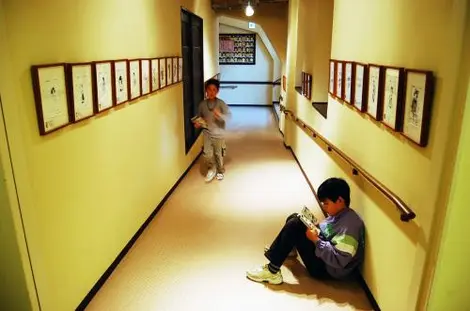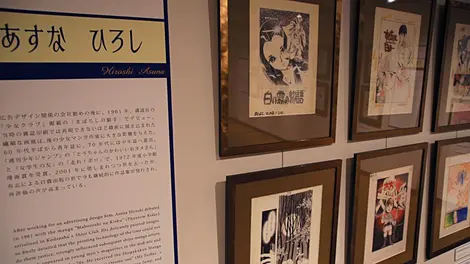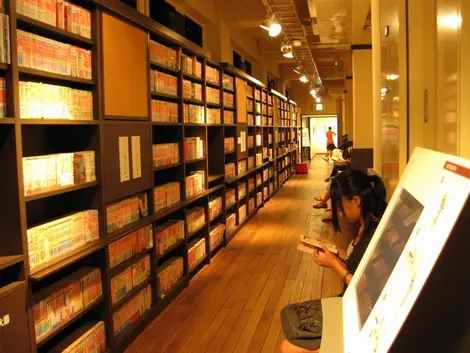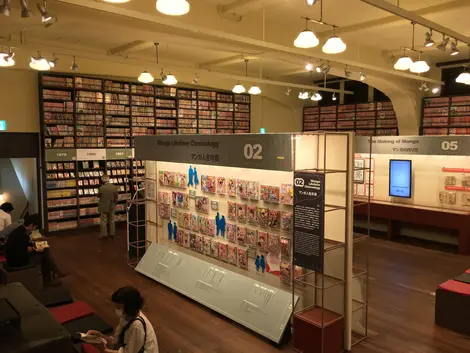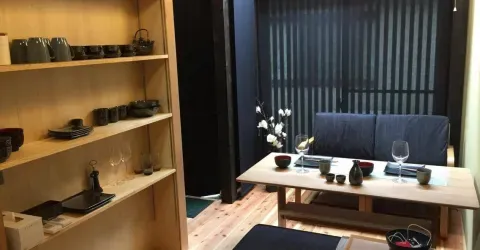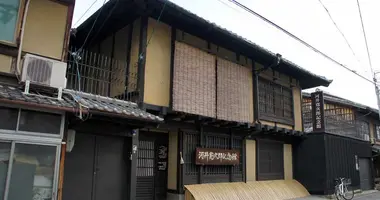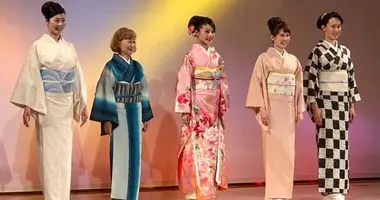The international manga museum 国際マンガミュージアム
Discover all the secrets of Japanese manga
The Kyoto International Manga Museum invites you to discover or rediscover, far from Western clichés, an art in its own right in Japanese culture: manga. Come and learn more about its origins, history, developments, and place in Japanese society.
Manga, Japanese art in its own right
A pillar of Japanese pop culture, manga is now playing among the big boys. And the stereotypical images which derive from it are numerous: heroes with superpowers, worlds of fiction, or unbridled Japan ... Difficult to define, the manga has as many styles as it has designers: in such and such a work, it is savored for the finesse of its features and sonography; in another, it is the complexity of the plot that pleases, the attachment to the characters that give this particular desire to discover and rediscover...
In the nineteenth century, the painter Hokusai Katsushika (1760-1849) published several years of Hokusai manga, his book "drawings without purpose" through sketches, without a plot.
- Read also: Ukiyo-e, the art of Japanese prints
After the Second World War and the seven years that followed, marked by the American occupation, the manga approached the form we know it today, the innovations of graphics and the marketing popularizing while gaining popularity.
In 1984, the Weekly Shonen Jump, a weekly publication publishes the first pages of Dragon Ball. Very quickly, the shonen manga (for boys), to be distinguished mainly from the shojo (for girls) and the seinen (young adults) - boosted the sales and spread throughout the world, in the form of albums this time, the tankobon (standalone book). When the publication of DragonBall came to an end, small-format Japanese comics flooded the Western market. We will also mention Astroboy - the celeb Tezuka Osamu (1928-1989), the "manga god" who has his museum in Takarazuka, not far from Osaka - who marked Japan.
The collections of the International Manga Museum
Opened in 2006 in the former Tatsuike primary school, the first museum in the world entirely dedicated to the art of manga unveils an impressive collection of books on several floors, all available for consultation and classified by year, from 1945 to 2005. When it opened, the museum already housed more than 300,000 manga, including old and foreign works. Several themed rooms follow one another on the three floors of this peaceful museum.
Fans and casual observers alike can walk around the old classrooms while discovering the history of manga, from its stylistic evolutions to its changes.
Walking between the libraries, the educational panels (in English), and the many posts, everyone notices that the manga rhythm the daily life of hundreds of thousands of Japanese, all generations combined, who enjoy reading series adapted to their tastes and their ages: shojo, shonen, or seinen.
In addition to the classic exhibition halls, the visitor can attend certain events by going to the museum at the right time. Thus, every Saturday and Sunday, as well as during the Japanese school holidays, you can go to the "manga studio" to observe the process of creating manga in real-time, with professional designers.
Another curiosity: the "portrait corner ", where four manga-ka (manga artists) are present to draw you a manga-style portrait. The portrait corner opens at 11 am on weekends and during holidays, until 5.30 pm However, come as early as possible, to ensure your spot. You will need to pay 1,500 yen (around$13/ 11.45€) for a portrait of one person, 2,500 yen (around $21.75/19€) for two people, and 3,500 yen (around $30.50/26.75€) for three people.
- Read also: The Sumida-Hokusai Museum in Tokyo
Temporary exhibitions and activities around the manga
In addition to the permanent exhibition, various temporary exhibitions are organized regularly, observing the place of myth in the manga or looking at a particular bound of edition. Some also concern the work of particular artists.
The regularly scheduled drawing workshops and the library make the museum a lab, more frequented by Kyotoites than by foreign visitors. For a membership, Japanese comic addicts can access the entire collection, over 300,000 books, mostly in Japanese, but increasingly in English and some in French. Do not hesitate to leaf through the many titles, whose richness of designs and styles is matched only by the Japanese cultural spectrum.
To learn more about the Japanese manga:
Address, timetable & access
Address
Phone
+81 (0)75 254 7414.Timetable
Karasuma or Tozai metro lines, Karazuma-Oike stop, exit #2. Bus lines 15, 51, 61, 62 and 63 Karasuma Oike stop.Price
Adults 900 yen ($8/7€ ), high school/college students 400 yen ($3.50/3€), primary 200 yen ($1.75/1.50€).Access
10 am-6 pm, closed on Wednesdays. Admitted until 5.30 pmWebsite
https://www.kyotomm.jp/en/




